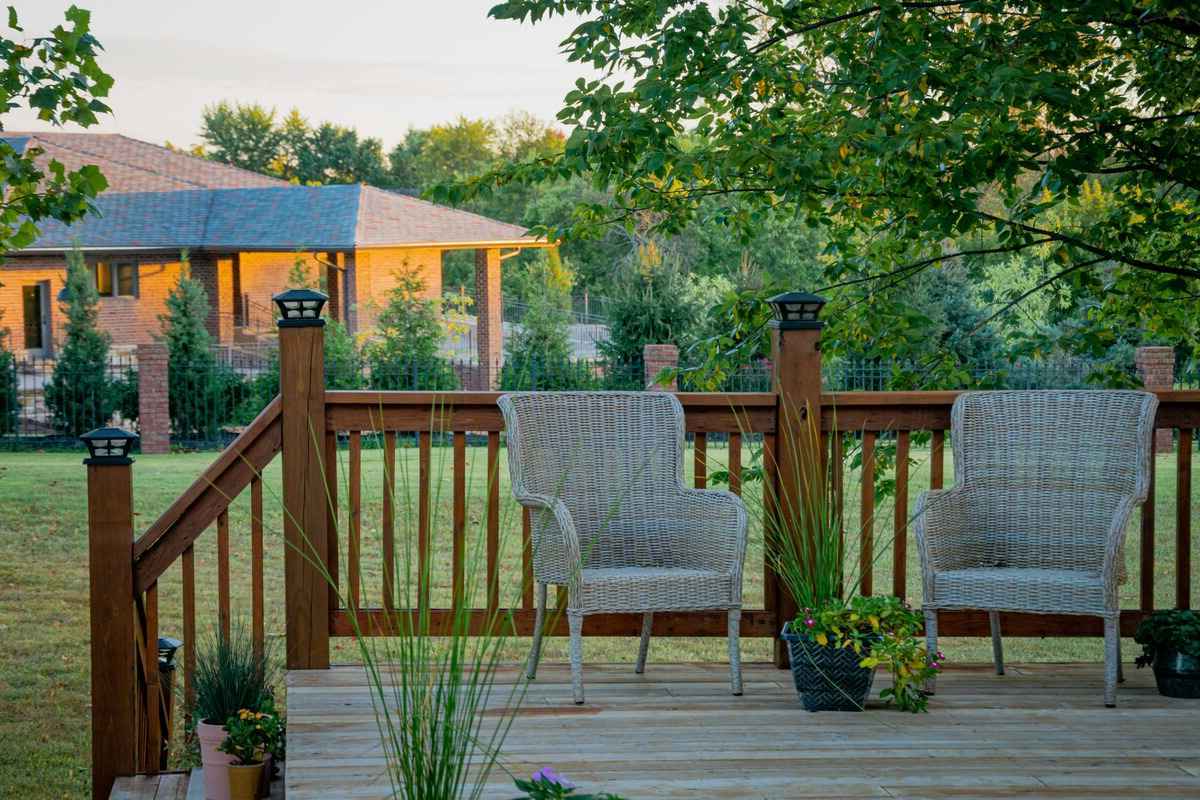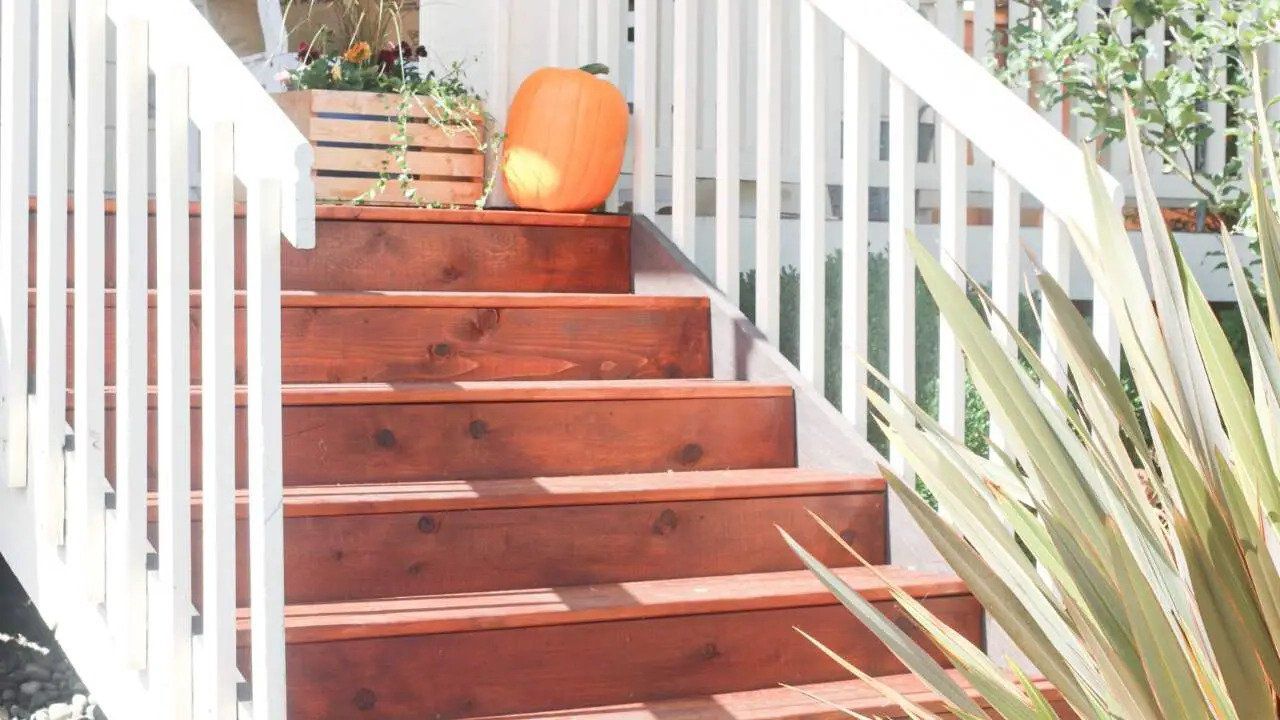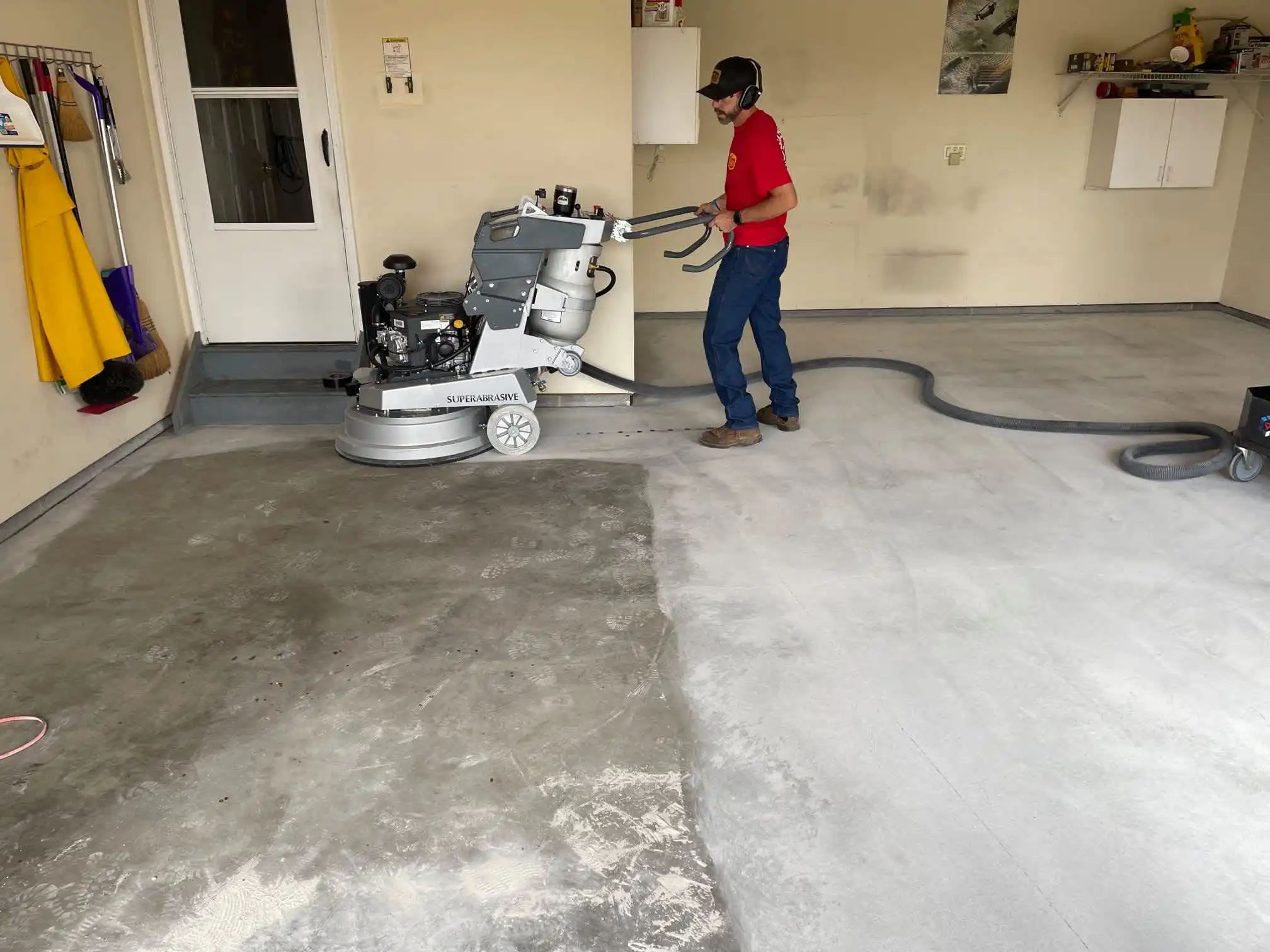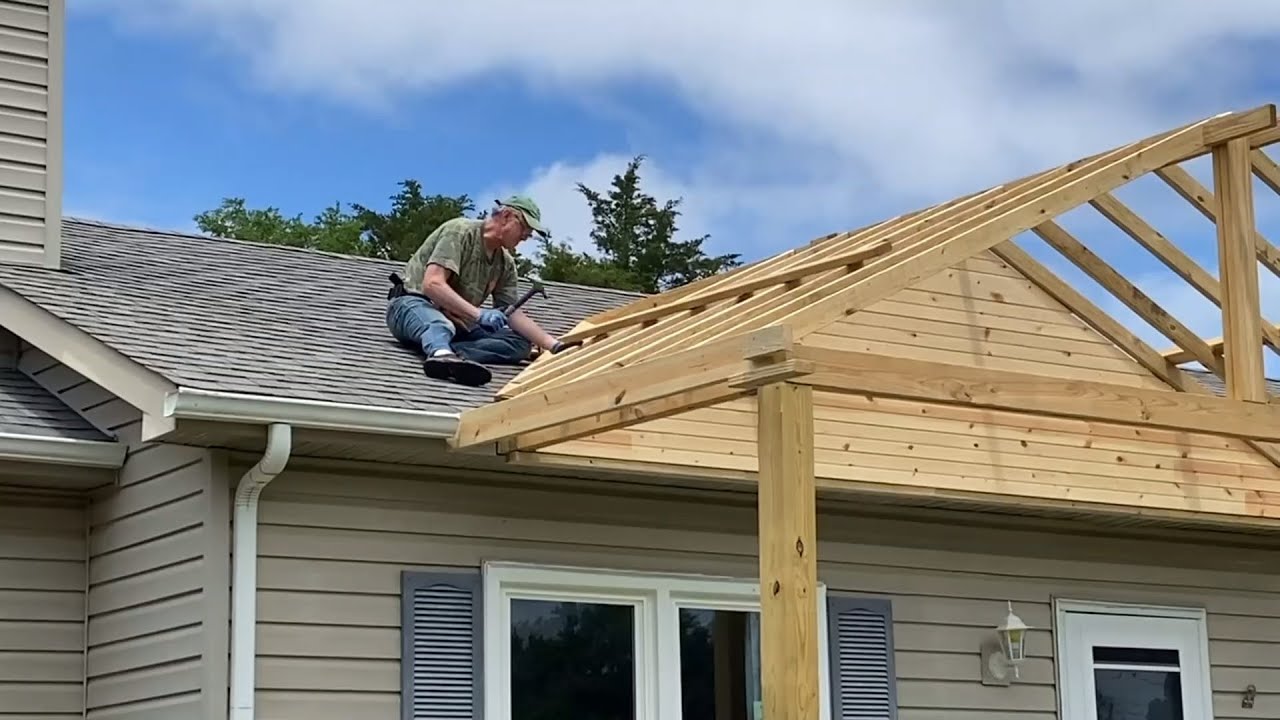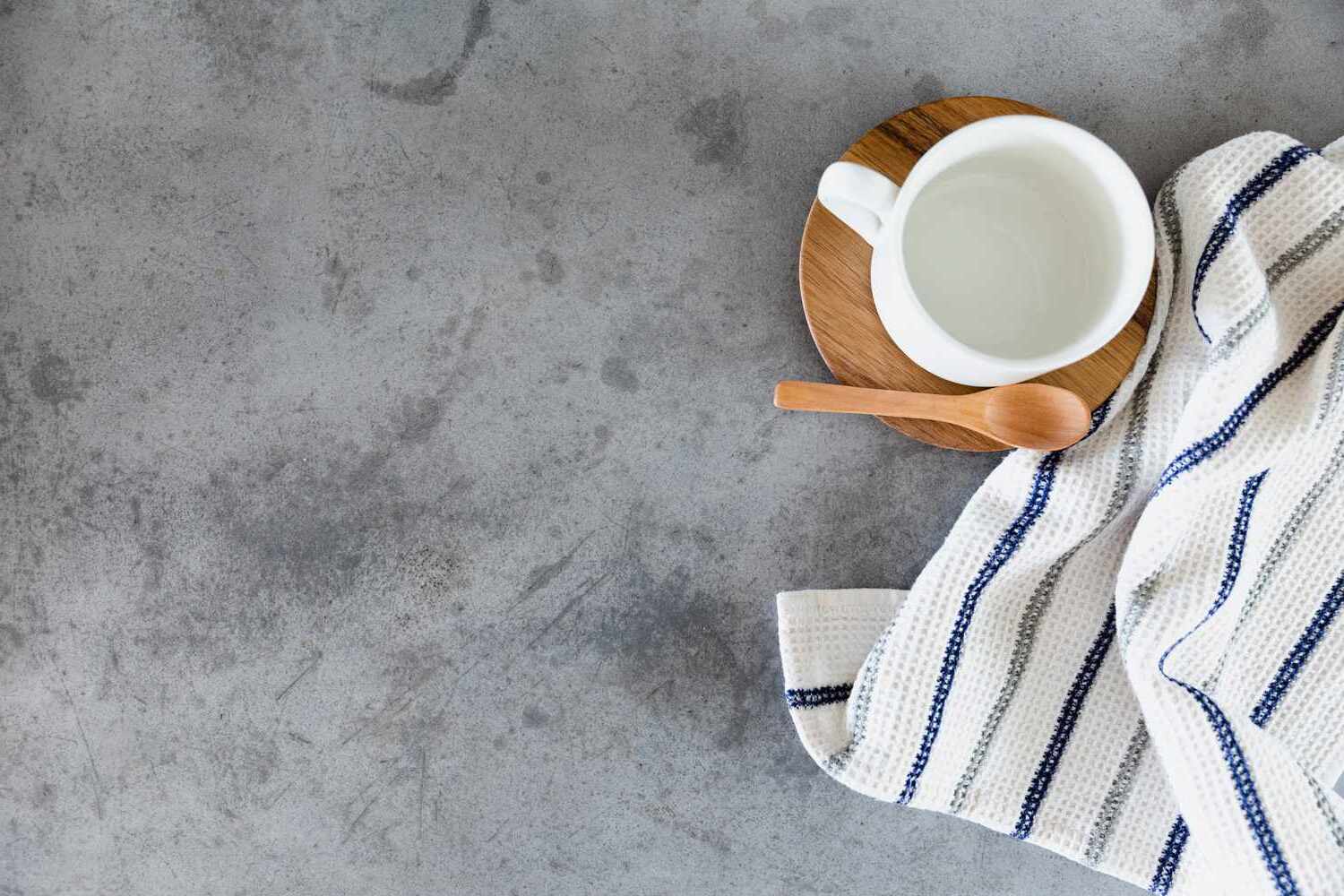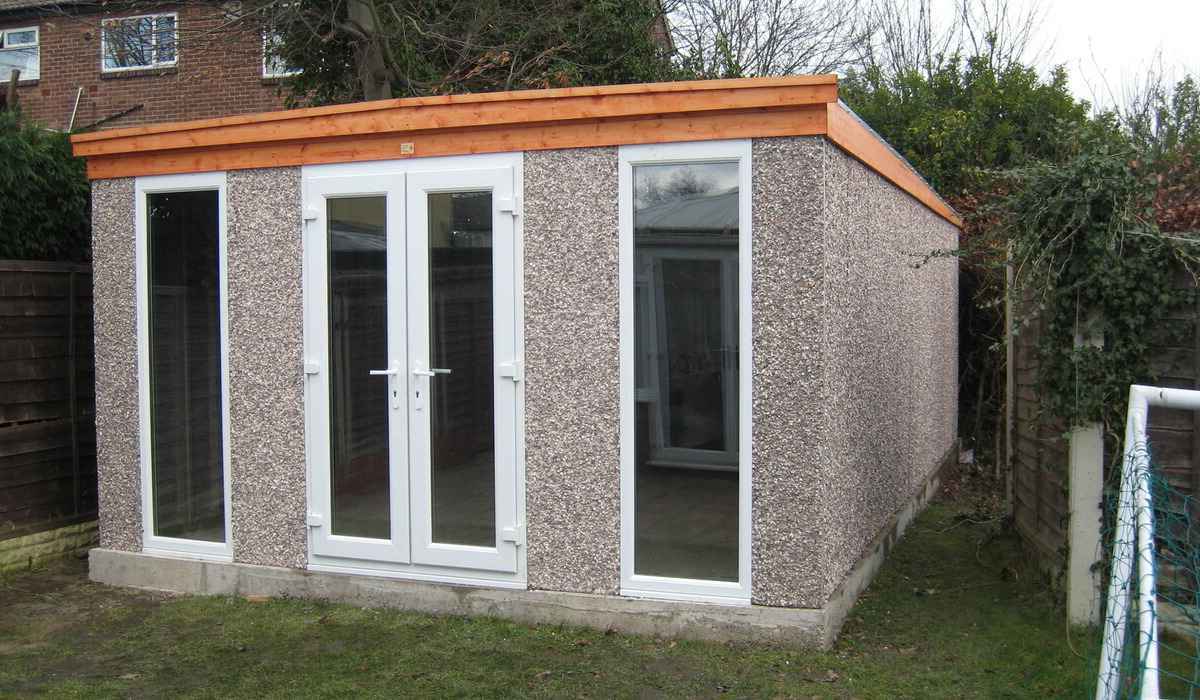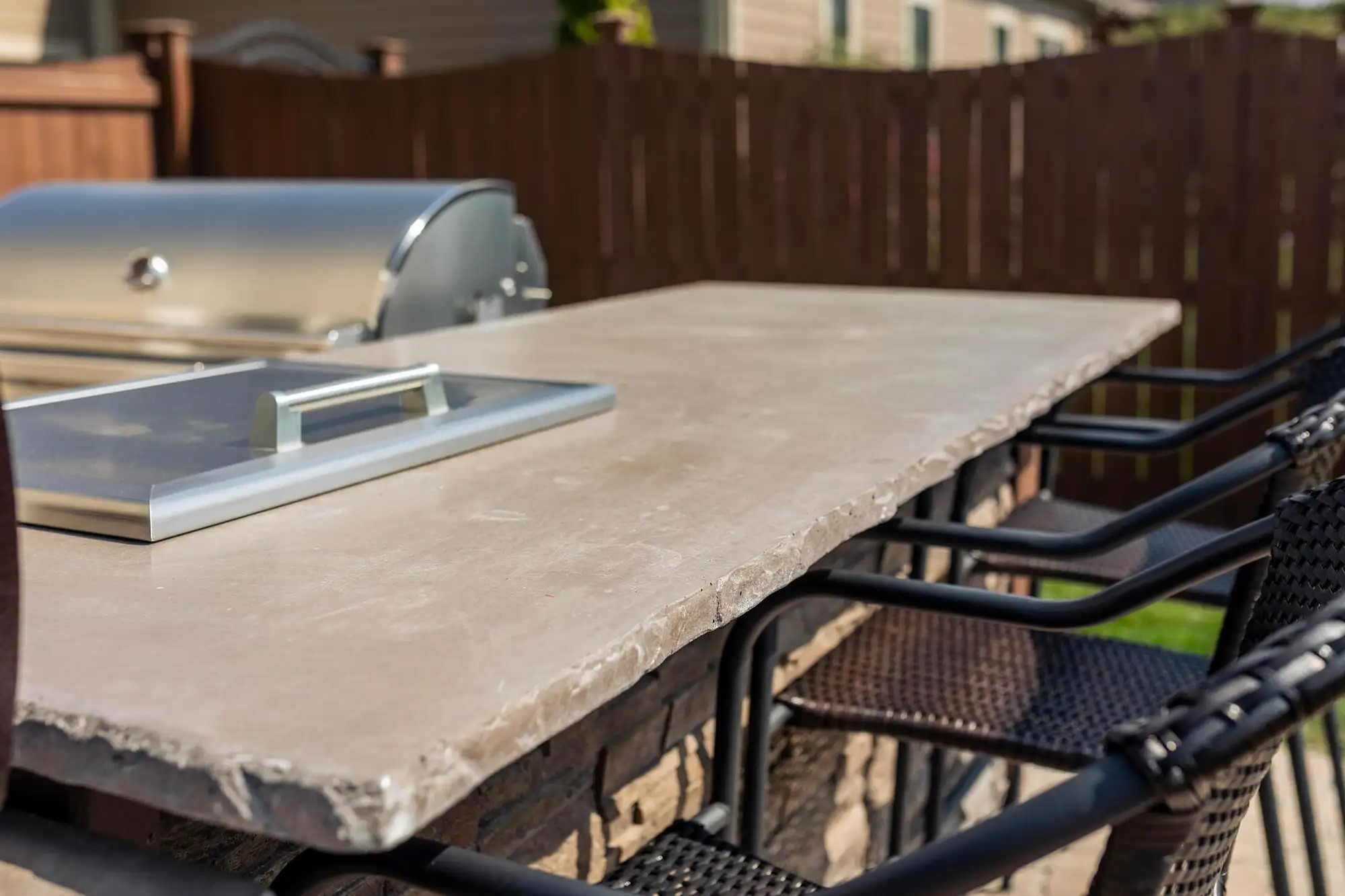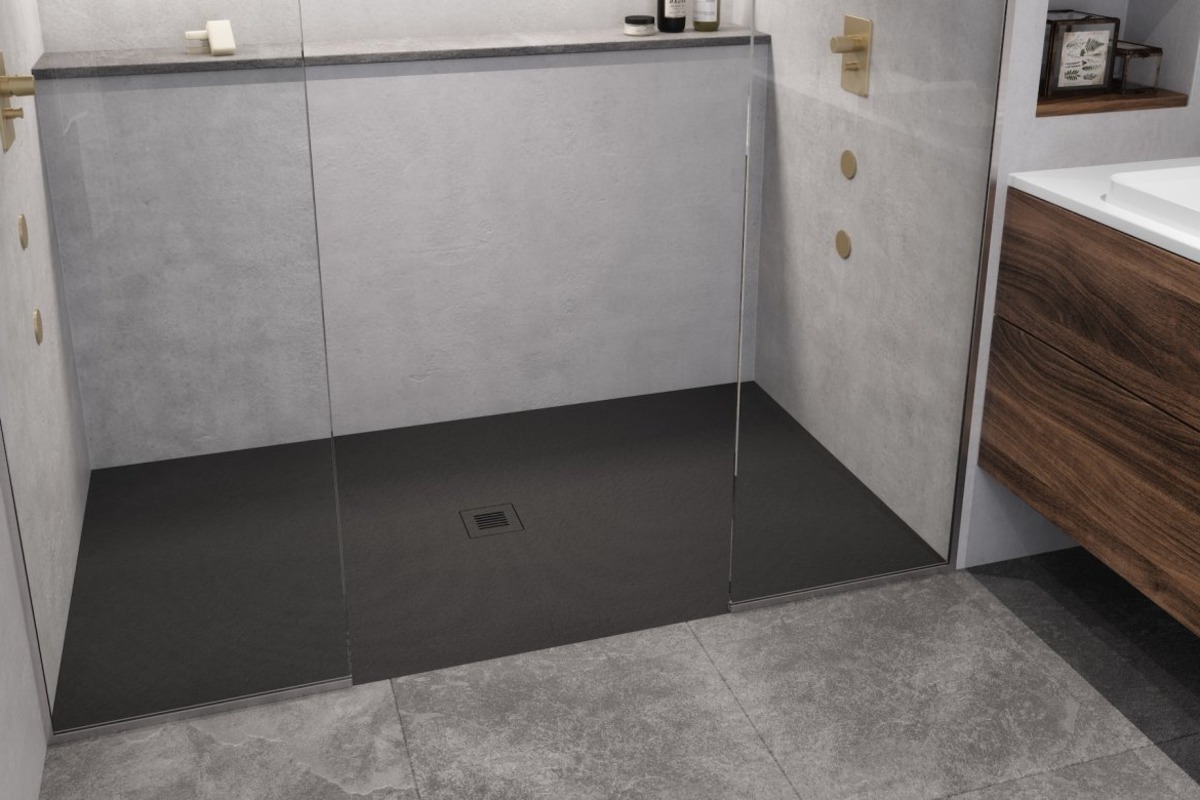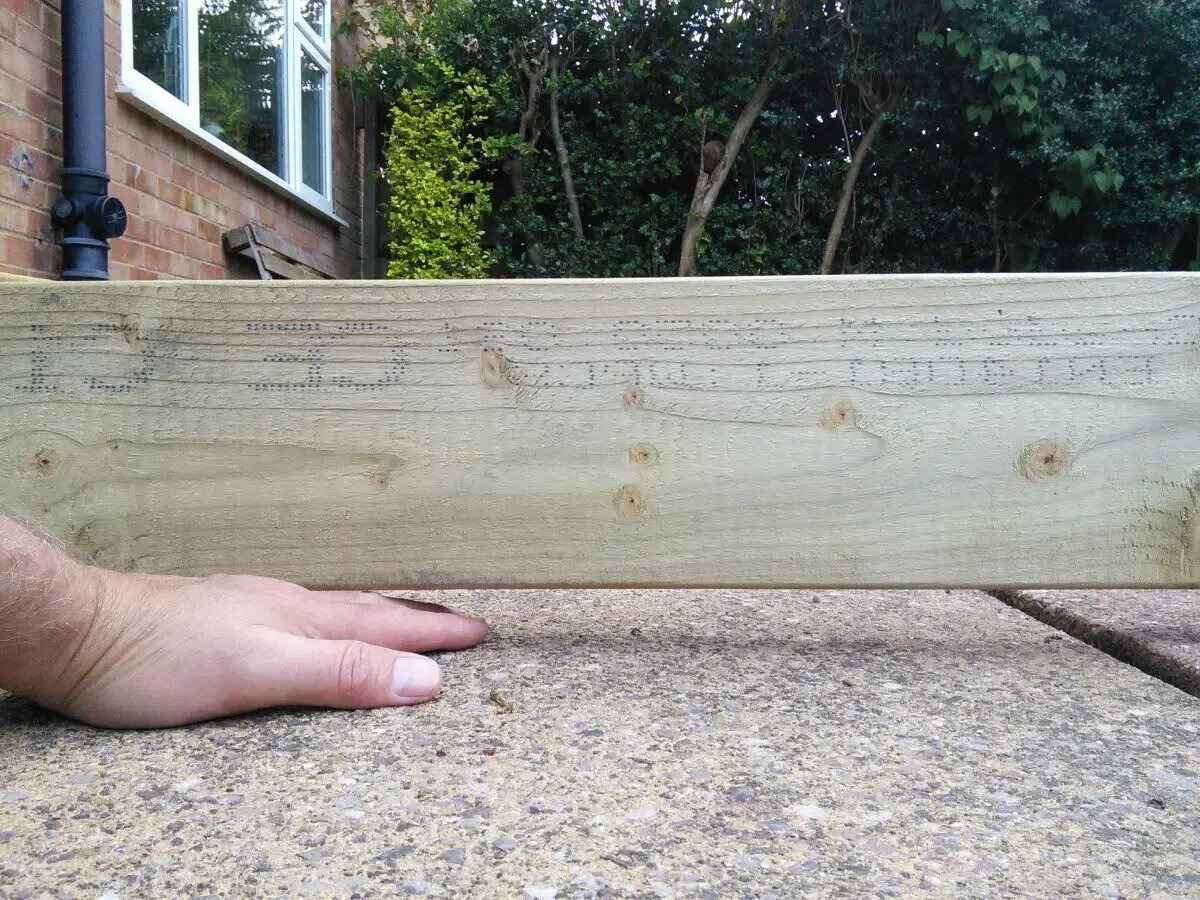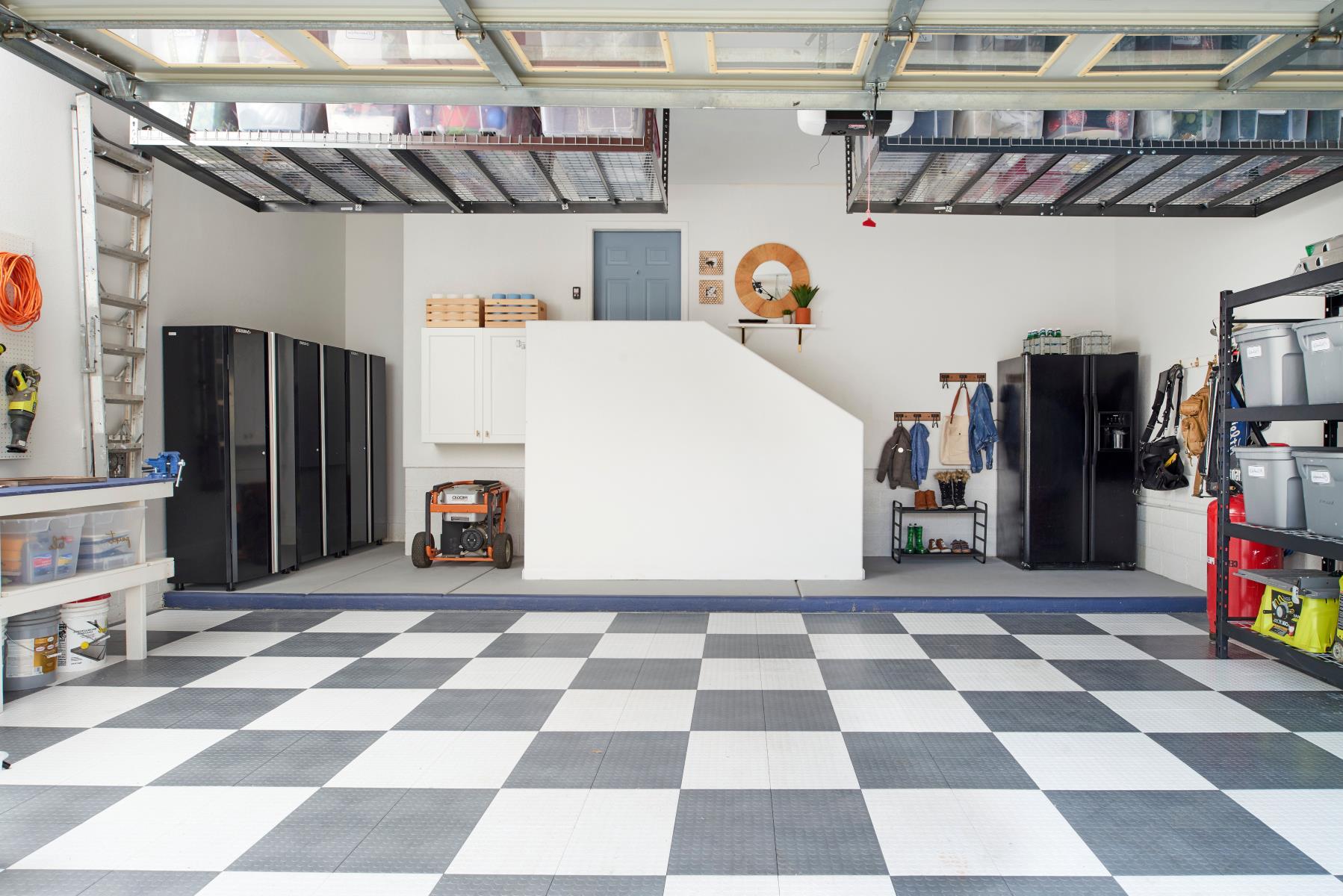Home>Knowledge & Skills>Masonry & Tilework>How To Make A Concrete Porch
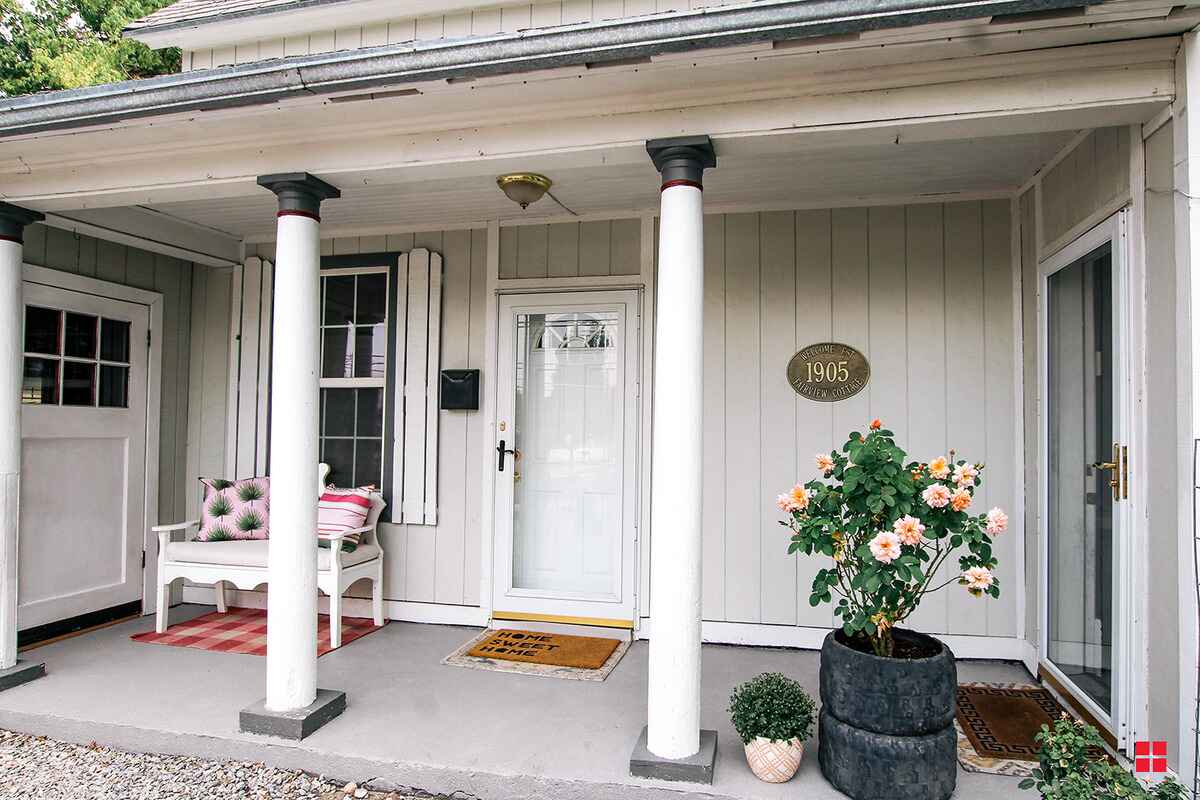

Masonry & Tilework
How To Make A Concrete Porch
Published: March 6, 2024

Our Editor-in-Chief brings a fresh perspective with his expertise in modern home technologies and eco-friendly solutions. Philip bridges tradition with innovation across a wide range of DIY topics.
Learn how to create a durable and stylish concrete porch with our expert masonry and tilework tips. Enhance your home's curb appeal today!
(Many of the links in this article redirect to a specific reviewed product. Your purchase of these products through affiliate links helps to generate commission for Twigandthistle.com, at no extra cost. Learn more)
Introduction
So, you've decided to upgrade your porch and give it a fresh, new look. One of the best ways to achieve this is by making a concrete porch. Not only does a concrete porch add durability and strength to your home's entrance, but it also provides a clean and modern aesthetic. In this article, we'll guide you through the step-by-step process of creating your very own concrete porch. Whether you're a seasoned DIY enthusiast or a beginner looking to take on a new project, with the right guidance, you can transform your porch into a stylish and long-lasting feature of your home. Let's get started!
Read more: How To Build A Screened In Porch On Concrete
Materials Needed
To get started on your concrete porch project, you'll need to gather the necessary materials and tools. Here's a list of what you'll need:
- Concrete mix: Choose a high-quality concrete mix suitable for outdoor use. You can opt for a standard concrete mix or a specialized one, depending on your preferences.
- Gravel: This will be used as a base for the concrete to provide stability and drainage.
- Wood forms: These will help you create the shape and structure of your porch. Make sure the forms are sturdy and can withstand the pressure of the concrete.
- Rebar or wire mesh: Reinforcement is essential for adding strength to the concrete. Rebar or wire mesh will help prevent cracking and increase the longevity of your porch.
- Concrete sealer: Once the concrete has cured, a sealer will protect the surface from stains, water damage, and general wear and tear.
- Concrete finishing tools: Trowels, edgers, and a float will be necessary for smoothing and finishing the surface of the concrete.
- Protective gear: Safety should always be a priority. Make sure to have gloves, safety glasses, and a dust mask to protect yourself during the mixing and pouring process.
- Wheelbarrow and shovel: These will be essential for mixing and transporting the concrete mix to the porch area.
- Water source: Access to water is crucial for mixing the concrete to the right consistency.
Gathering these materials and tools will set you up for a successful concrete porch project. Now that you have everything you need, it's time to move on to the next steps in the process.
Preparing the Area
Before you begin the concrete pouring process, it's crucial to prepare the area where your porch will be. Follow these steps to ensure a solid foundation for your project:
-
Clear the Space: Remove any existing structures, debris, or vegetation from the area where the concrete porch will be located. This includes plants, rocks, and old concrete or pavers.
-
Mark the Perimeter: Use stakes and string to outline the exact dimensions of your porch. This will serve as a guide for creating the forms and ensure that the concrete is poured in the correct area.
-
Excavate the Site: Dig down to a depth that allows for the gravel base and the thickness of the concrete. Typically, a depth of 4-6 inches is suitable, but this may vary based on your specific project requirements.
-
Compact the Soil: Once the site is excavated, use a compactor or tamper to firmly pack the soil. This will create a stable base for the gravel and concrete.
-
Add Gravel Base: Pour a layer of gravel into the excavated area and spread it evenly. The gravel will provide drainage and prevent the concrete from settling unevenly.
-
Install Forms: Place the wood forms along the perimeter of the excavated area, ensuring that they are level and securely anchored. The forms will contain the concrete as it is poured and shaped.
-
Reinforcement: If you're using rebar or wire mesh for reinforcement, now is the time to lay it within the forms. This step is essential for strengthening the concrete and minimizing the risk of cracking.
By thoroughly preparing the area, you'll create a stable and well-defined space for pouring the concrete. This sets the stage for the next steps in the process, bringing you closer to achieving a beautifully crafted concrete porch.
Mixing the Concrete
-
Calculate the Quantity: Before mixing the concrete, calculate the amount you'll need based on the dimensions of your porch. Use a concrete calculator to determine the cubic yardage required for the project.
-
Prepare the Mixer: If you're using a concrete mixer, follow the manufacturer's instructions for setup and operation. Ensure that the mixer is clean and free of any debris from previous use.
-
Add Water: Start by adding a portion of the required water to the mixer. It's essential to achieve the right water-to-concrete ratio for optimal strength and workability. Follow the guidelines provided by the concrete mix manufacturer.
-
Pour the Concrete Mix: Gradually add the concrete mix to the water in the mixer. Avoid dumping the entire load at once, as this can lead to uneven mixing and lumps in the concrete.
-
Mix Thoroughly: Once the concrete mix is added, start the mixer and allow it to blend the materials. Pay attention to the consistency of the mix. It should be smooth and free of clumps, with all components thoroughly combined.
-
Adjust Consistency: If the mix appears too dry, gradually add small amounts of water while the mixer is running. Conversely, if it's too wet, add small amounts of additional concrete mix until the desired consistency is achieved.
-
Mixing Time: The mixing process typically takes several minutes. However, the duration may vary based on the type of mixer and the quantity of concrete being prepared. Refer to the manufacturer's recommendations for mixing times.
-
Check the Consistency: Stop the mixer periodically to check the consistency of the concrete. Use a shovel or trowel to assess its workability. The mix should hold its shape without being too stiff or too runny.
-
Test the Mix: Perform a slump test to evaluate the workability of the concrete. Fill a cone-shaped mold with the freshly mixed concrete, then remove the mold and observe the slump, or the degree of sagging. The ideal slump range for a porch project is typically between 4 to 6 inches.
-
Adjust as Needed: Based on the results of the slump test, make any necessary adjustments to the mix's consistency. Add small amounts of water or concrete mix as required to achieve the optimal slump for your project.
By following these steps, you'll ensure that the concrete mix is properly prepared for pouring onto the porch area. Achieving the right consistency and workability is crucial for a successful concrete application.
Pouring and Leveling the Concrete
-
Pouring the Concrete: Once the concrete mix is thoroughly prepared, it's time to pour it onto the prepared porch area. Begin by depositing the concrete into the space enclosed by the forms. Work methodically to ensure even distribution and avoid creating air pockets within the concrete. Use a shovel or concrete rake to guide the concrete into place, filling the entire area to the desired thickness.
-
Spread and Level: With the concrete in place, use a screed board to level the surface. The screed board should rest on the top edges of the forms and be pulled across them in a sawing motion. This process helps distribute the concrete evenly and removes excess material, resulting in a smooth, uniform surface.
-
Check for Evenness: As you level the concrete, periodically check for evenness using a long straightedge. This will help identify any low or high spots that require adjustment. Make any necessary modifications by adding or removing concrete as needed to achieve a consistent level across the entire porch area.
-
Use a Bull Float: After the initial leveling, utilize a bull float to further smooth the surface of the concrete. The bull float is a large, flat tool that is pushed and pulled across the concrete, leveling and consolidating the mixture. This step helps eliminate imperfections and prepares the surface for the final finishing.
-
Edging the Perimeter: Once the main surface is leveled, use an edging tool to create a clean, defined edge along the perimeter of the porch. This step adds a professional touch to the project and prevents chipping or crumbling along the edges.
-
Final Check: Before the concrete begins to set, perform a final check of the surface. Look for any areas that may require additional smoothing or leveling. Making adjustments at this stage will contribute to the overall quality and appearance of the finished porch.
-
Curing the Concrete: After the concrete is poured and leveled, it's essential to allow it to cure properly. Cover the surface with a curing compound or plastic sheeting to retain moisture and promote gradual, even curing. This process is crucial for achieving the desired strength and durability of the concrete.
By following these steps, you'll effectively pour and level the concrete for your porch, setting the stage for the next phase of the project.
Read more: How To Build A Front Porch With Roof
Finishing the Surface
Once the concrete is poured and leveled, the next crucial step is to focus on finishing the surface to achieve a polished and professional look for your porch. Here's a detailed guide on how to effectively finish the concrete surface:
-
Float the Surface: After the initial leveling and before the concrete sets completely, use a float to smooth the surface. A float is a flat tool that is pushed and pulled across the concrete, helping to fill voids, consolidate the mixture, and create a uniform texture. This step prepares the surface for the final finishing touches.
-
Create a Non-Slip Texture (Optional): If you want to enhance the safety of your porch, consider adding a non-slip texture to the surface. This can be achieved by lightly dragging a broom over the concrete in a consistent pattern. The texture provides traction, especially during wet or icy conditions, making your porch safer for foot traffic.
-
Add Decorative Patterns or Borders (Optional): For a personalized touch, you can incorporate decorative patterns or borders into the concrete surface. This can be achieved using specialized stamping tools or by creating custom forms to add unique designs. Whether you prefer a classic brick pattern or a modern geometric design, adding decorative elements can elevate the aesthetic appeal of your porch.
-
Apply a Smooth Finish: If you desire a sleek and refined look, consider using a steel trowel to create a smooth finish on the concrete surface. The trowel is used to further flatten and compact the concrete, resulting in a polished appearance. This step requires skill and precision to achieve a flawless surface.
-
Edge the Surface: Pay attention to the edges of the porch and ensure they are neatly finished. Use an edging tool to create a clean, rounded edge along the perimeter of the porch. This not only enhances the visual appeal but also prevents chipping and promotes durability.
-
Control Joint Placement: Control joints are essential for controlling cracking in the concrete. Strategically place control joints using a grooving tool to create weakened areas where the concrete can crack in a controlled manner. This helps prevent random cracking and ensures the long-term integrity of the porch surface.
-
Final Inspection: Before the concrete sets completely, perform a final inspection of the surface. Look for any imperfections, uneven areas, or blemishes that require attention. Making refinements at this stage will contribute to the overall quality of the finished surface.
By following these detailed steps, you can effectively finish the surface of your concrete porch, achieving a professional and visually appealing result. Each step contributes to the overall quality and longevity of the porch, ensuring that it becomes a durable and attractive feature of your home.
Curing and Sealing the Porch
After the concrete has been poured, leveled, and finished, the final critical steps involve curing and sealing the porch. These steps are essential for enhancing the strength, durability, and overall longevity of the concrete surface.
-
Curing Process: Proper curing is crucial for allowing the concrete to achieve its maximum strength and durability. Here's how to effectively cure the porch:
-
Moisture Retention: Immediately after finishing the surface, cover the concrete with a curing compound or plastic sheeting. This helps retain moisture and prevents rapid evaporation, allowing the concrete to cure gradually and evenly.
-
Duration of Curing: The curing process typically lasts for a minimum of seven days, during which the concrete gains strength. However, for optimal results, consider extending the curing period to 14 days, especially in harsh weather conditions or extreme temperatures.
-
Moisture Monitoring: Regularly check the moisture content of the concrete during the curing period. If the surface appears dry, lightly mist it with water to maintain adequate moisture levels.
-
Avoid Disturbance: While the concrete is curing, minimize foot traffic and avoid placing heavy objects on the surface. This allows the concrete to set undisturbed and achieve its full strength.
-
-
Sealing the Porch: Once the concrete has fully cured, the final step is to apply a high-quality concrete sealer. Sealing the porch offers several benefits, including protection against stains, water damage, and general wear and tear. Here's how to effectively seal the porch:
-
Surface Preparation: Before applying the sealer, ensure that the concrete surface is clean and free of any debris. Use a broom or blower to remove dirt, dust, and other particles from the surface.
-
Selecting the Sealer: Choose a concrete sealer suitable for outdoor use and specifically formulated for porches or similar surfaces. Consider factors such as UV resistance, slip resistance (if desired), and the type of finish you prefer.
-
Application Method: Apply the sealer using a roller, brush, or sprayer, following the manufacturer's instructions. Work methodically to ensure even coverage and avoid pooling or streaking.
-
Multiple Coats: Depending on the type of sealer, you may need to apply multiple coats for optimal protection. Allow each coat to dry completely before applying the next one.
-
Drying Time: After the final coat is applied, allow the sealer to dry according to the manufacturer's recommendations. This typically ranges from a few hours to a full day, depending on the specific product.
-
Regular Maintenance: Once the porch is sealed, periodic maintenance is essential to preserve the sealer's effectiveness. This may include regular cleaning and reapplication of the sealer as needed to maintain protection.
-
By effectively curing and sealing the porch, you'll ensure that the concrete surface remains strong, resilient, and visually appealing for years to come. These final steps contribute to the overall quality and longevity of your newly constructed concrete porch.
Conclusion
In conclusion, creating a concrete porch is a rewarding and impactful home improvement project that adds both aesthetic appeal and durability to your property. By following the step-by-step process outlined in this guide, you can confidently take on the task of making a concrete porch, whether you're a seasoned DIY enthusiast or a beginner looking to expand your skills. From preparing the area and mixing the concrete to pouring, leveling, and finishing the surface, each stage plays a crucial role in achieving a high-quality result. Additionally, the careful attention to curing and sealing the porch ensures that the concrete surface maintains its strength and visual appeal over time. With the right materials, tools, and guidance, you can transform your porch into a long-lasting and impressive feature of your home. Embrace the opportunity to enhance your property with a beautifully crafted concrete porch, and enjoy the lasting benefits it brings to your outdoor space.

